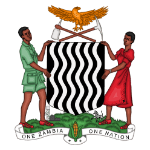Background
Zambia first rolled out the malaria scorecard management tool in 2016 in a joint effort by the Ministry of Health’s National Malaria Elimination Centre (NMEC), with support from ALMA and partners. In 2018, Zambia was the first country to pilot the scorecard’s new functionality, the Workplan Manager tool.
How it works
The scorecard is populated using DHIS2 at the national level. The scorecard is used to generate and track actions through existing coordination mechanisms at both national and subnational level.
The scorecard is also reviewed every quarter by the End Malaria Council (EMC). Convened by the President of the Republic of Zambia, and chaired by the Minister of Health, the End Malaria Council is comprised of representatives from government, business, and the community and currently consists of 16 members. The scorecard tool allows the review of progress and activities, but also identification of solutions to resolve bottlenecks.
Every year, provinces harmonise and upload their workplans into the tool, which allows all stakeholders (government, provinces, districts and partners) to login regularly to review performance, identify and address bottlenecks and drive action. The workplan is discussed at several meetings including weekly management meetings at provincial or district level, quarterly meetings at the district or provincial level, monthly directorate meetings at the NMEP and quarterly meetings of the End Malaria Council.
Impact
Improved efficiency
The implementation of the Workplan Manager feature has led to a significant increase in Zambia’s 2019 operational plan implementation rate, with 80% achieved in 2019, compared to the average of 36% implementation that was achieved in 2016, prior to rollout of the new tool. The tool was widely credited to have strengthened partner coordination and improved joint reporting and is now reviewed monthly by all parties to track progress and identify bottlenecks.
Service delivery improvements
In Eastern province, the scorecard review and analysis revealed that 12 out of 14 districts were not on track for the indicator ‘proportion of pregnant women receiving long lasting insecticidal nets through antenatal care’. Corrective action was taken and the scorecard showed the progress made by the province with the 12 districts on track.
Political commitment and resource mobilisation
In October 2019, the NMEC presented the scorecard at an EMC meeting and outlined that one indicator was underperforming (pregnant women receiving 3 doses of IPTp during ANC) due to a stock out of the drug sulphadoxine-pyrimethamine (SP). Commitments following the meetings were made and by the next meeting it was confirmed that 2,450 tins of SP worth 230,000 USD were received and distributed to the provinces.
Improved data quality
The scorecard management tool has proved to be an asset in strengthening service delivery and data quality. In Chembe District in Luapula Province, the Provincial Health Office (PHO) observed a sudden increase in incidence rate in the scorecard, which led to a data audit. The audit conducted identified discrepancies that were attributed to one facility that was over-reporting. Technical support was provided to facility staff and orientation conducted at Provincial Integrated Meetings (PIM).
Key success factors
- Workplan manager used to harmonize and monitor workplans
- Shared with political stakeholders at all levels through the EMC
- Integrated into DHIS2
- Action tracker used to enhance accountability at all levels
